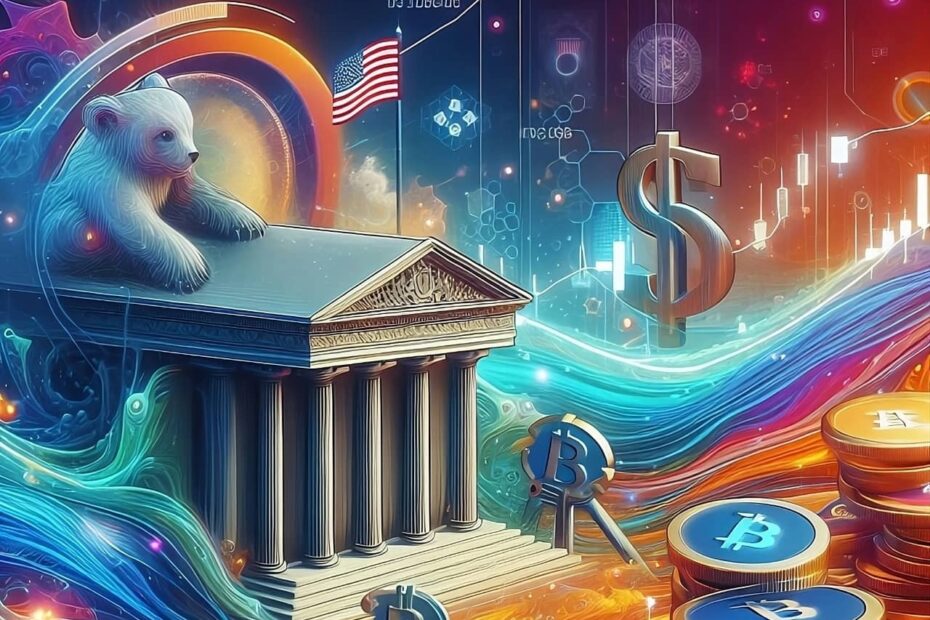The State, so apparently reluctant to tokenization, is becoming one of the accelerators of the tokenization of society due to its search for liquidity in the financial system.
States Rev Up Tokenization to Boost Liquidity. Since the beginning of January 2024, there has been a six-fold increase in the market value of tokenized U.S. Treasury assets. Tokenization is the Blockchain-based mechanism by which many assets with complicated liquidity become more liquid. We have talked about real estate assets, works of art, relationships between creators and their followers, and a long etcetera. Tokenization broke into the social system designed to offer liquidity, such as the financial system. And it is doing so with one of the central products of this financial system, such as Public Treasury bonds. They are products designed to generate liquidity for the State. Tokenization injects liquidity into these products, intended to build liquidity for the State.
Contents
Tokenizaion and the State
Tokenization of the financial system increases its liquidity. The system’s financial liquidity is its essential point. It is its value criterion. Let’s continue with the equation. Tokenization increases the system’s liquidity in an economy where finances occupy a hegemonic place. Thus, we coined a rather ugly term: financialization of the economy. It means that the financial sector’s contribution to GDP, employment, and capital markets is growing, and in developed economies, it is the leading mechanism for allocating resources. These are economies that continually require liquidity. Something that has ended up shaping a liquid society, as the Anglo-Polish sociologist Zygmunt Bauman reminded us. Tokenization is one more step in the configuration of the liquid society.
A macroeconomic context of inflation with low interest rates and the State’s constant need for resources led many savers to invest in the Public Treasury. Bonds are a conservative form of investment, conceived as safe, which at least avoids part of the loss in the value of money due to inflation.
Secondary Markets
Markets linked to government bonds tend to be considered boring for investors who lack any risk and investment ethic, being risk-averse savers. But when, as has happened in the United States and elsewhere, the annual interest offered by these products reaches 5%, they are no longer so dull. They attract the non-investor and all types of investors. This attraction opens up the potential of secondary markets, where tokenization has become a powerful possibility.
At first sight, it seems paradoxical that tokenization injects liquidity into a financial product that has tended to be acquired by those probably looking for less liquidity beyond having their money safe. But it is not paradoxical. It is relatively coherent that the money injection in a system addicted to liquidity should have its foundation on the less liquid products with the most potential to admit such an injection of liquidity.
Efficiency, Transparency and Accesibility
But the Treasury is more than just a way for the government to manage debt or a haven for conservative investors. The Treasury is a critical player in financial market liquidity, with a role in its stability. Anything that affects the Treasury ends up hitting the system. Considering the hegemony of finance, it affects society as a whole. Tokenization indirectly transforms into liquidity, the most solid, less liquid, and more risk-averse parts of society.
The question now is what tokenization of, for example, Treasury bonds can bring to these assets in particular and, as a model, to the financial system as a whole.
Tokenization of Public Investments
Efficiency by reducing costs associated with the traditional issuance and distribution of bonds. Transparency because it provides a transparent and secure record of ownership of these financial assets. Accessibility because investors can buy and sell tokens of such bonds with less costs and intermediaries, as mentioned above, at any time, being on offer and with the possibility of instant settlement in open negotiations 24 hours a day, seven days a week. A way of operating that increases the liquidity of the secondary market, where tokenization takes place. This increase in liquidity is, as has been pointed out, the critical point of any financial system.
The interpretation of this significant and sudden increase in the tokenization of the State’s financial products can go further. Within the framework of the tokenization of society, one can think of the tokenization of public investments in search of returns by private individuals, much more open and democratic than the current form, and in search of liquidity by the investing state.
Tokenization of the Financial System
Take the example of highways, ports, or airports. Things can go even further if we move from monetary to symbolic returns. Considering the tokenization of public monuments, citizens can own them. In short, the door to the tokenization of the State may be opening. For the moment, what is open is the tokenization of the financial system.

